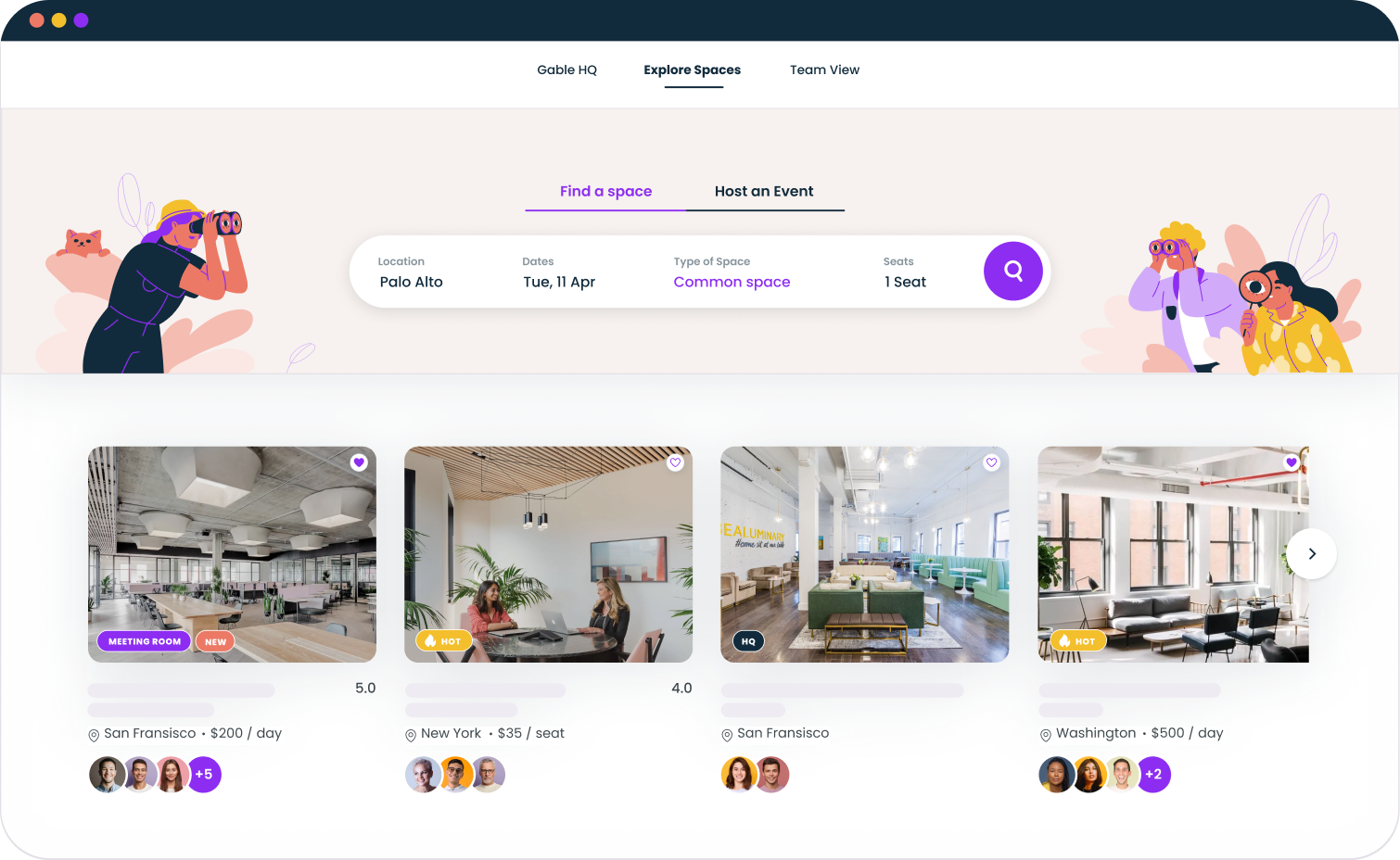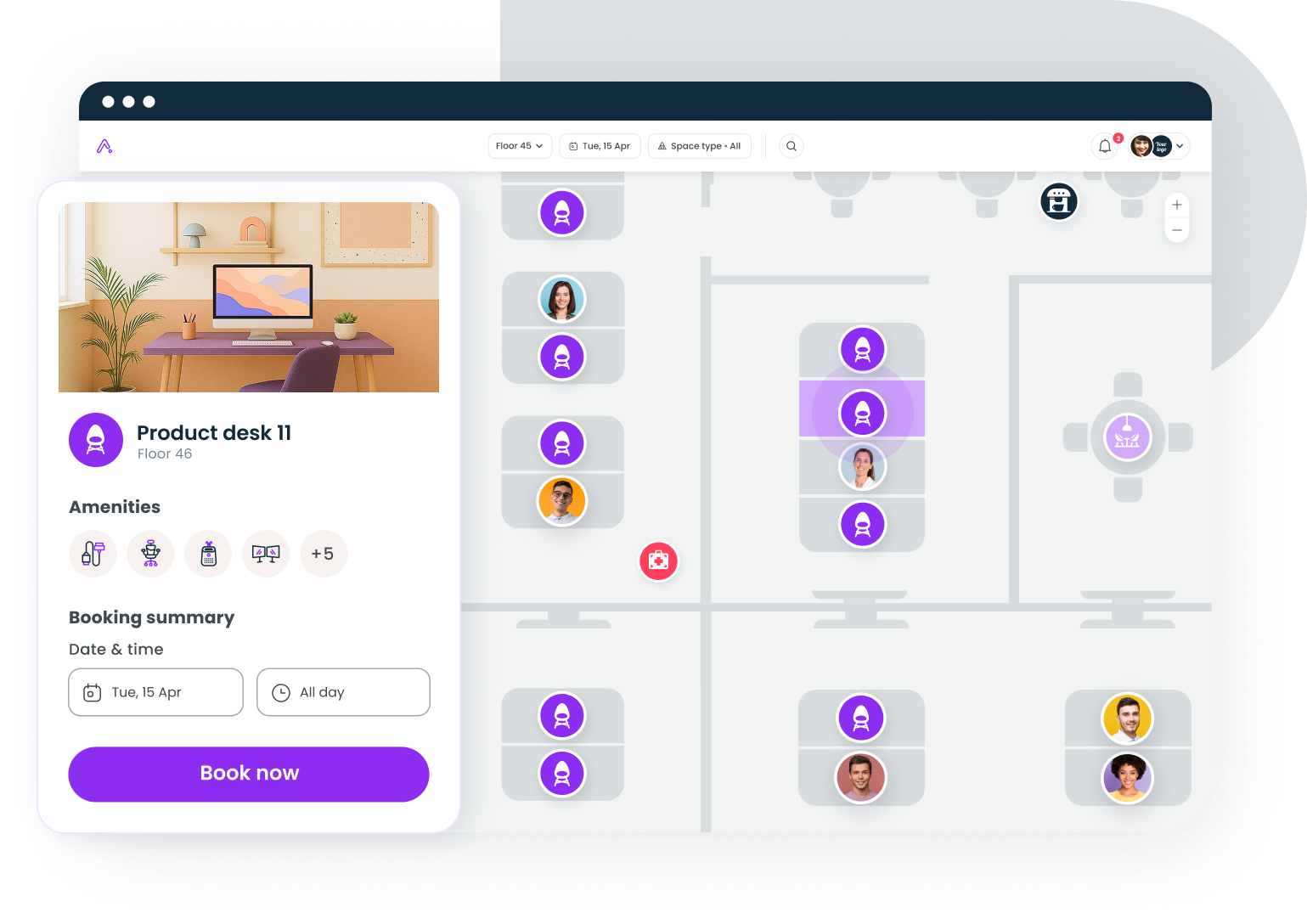The way we work has fundamentally changed over the past decade. What once seemed like a perk reserved for freelancers and tech startups has become standard practice across industries. Today, more companies are embracing distributed work as a strategic advantage rather than a temporary accommodation.
But what exactly does it mean to have a distributed workforce? And how does it differ from remote work, hybrid arrangements, or traditional office setups?
This guide breaks down everything you need to know about the distributed workforce model, including its benefits, challenges, and whether it makes sense for your organization.
What is a distributed workforce?
A distributed workforce refers to an organizational structure where employees working across different physical locations perform their jobs without gathering in a central office. Rather than reporting to a company's main office each day, distributed workers complete their responsibilities from wherever they happen to be: home offices, coworking spaces, a local coffee shop, or even satellite offices in various cities.
The key characteristic of a distributed workforce model is intentional design. Unlike situations where one or more employees occasionally work from home, a truly distributed company builds its entire organization around location independence. Policies, communication systems, and company culture all reflect the reality that the entire team may never share the same physical location at the same time.
In a geographically distributed workforce, team members might span different geographical locations and time zones. A software engineer in Austin collaborates with a designer in Berlin and a project manager in Singapore. They may never meet in person, yet they function as a cohesive unit through thoughtful coordination and the right distributed workforce tools.
Distributed vs. remote vs. hybrid: What's the difference?
These terms often get used interchangeably, but they describe distinct arrangements:
Traditional office model: All employees report to the same physical office space daily. The traditional office serves as the hub for all work activities, team meetings, and collaboration.
Remote work: Some employees work outside the office, but the organization maintains a central office as its primary base. Remote employees connect to headquarters, and company culture centers around those who work on-site. Before the pandemic, only about 8% of employees worked remotely even one day per week.
Hybrid work model: Employees split time between working from home and coming into the office. A hybrid model typically involves set days in the office or minimum attendance requirements. Research from Stanford shows that hybrid workers who spend two days per week at home are just as productive as full-time office workers while showing 33% lower turnover rates.
Distributed work model: The entire organization operates without a central office. A fully distributed company may have no physical office space at all, or it might maintain small office locations in key cities without designating any as "headquarters." Every employee, regardless of location, has equal access to information, opportunities, and corporate resources.
The fundamental difference comes down to where power and culture reside. In remote and hybrid arrangements, the physical office remains central. In distributed work, no single location holds more importance than another.
Types of distributed workforce models
Not all distributed companies look the same. Here are the most common structures:
Fully distributed (no office): The organization has zero permanent physical office space. All employees work from their chosen locations, and in-person gatherings happen at rented venues or coworking spaces. Companies like GitLab and Zapier operate this way.
Distributed with hubs: The company maintains small office locations or satellite offices in multiple cities, but no single location serves as headquarters. Employees can use nearby hubs when they want dedicated workspace, but attendance isn't required.
Hybrid-distributed: Some employees work from a remote office or home full-time, while others follow a hybrid model with occasional office attendance. This approach works well for companies transitioning from traditional setups or those with job functions that occasionally require in-person presence.
Hub-and-spoke: A company's main office exists for certain functions (like executive leadership or specialized equipment), but most of the entire organization works distributedly. The hub handles specific needs while spokes operate independently.
Who makes up a distributed workforce?
Distributed team members come from every industry and role, though some job functions translate more naturally to location-independent work. Knowledge workers, including software developers, marketers, accountants, designers, HR teams, and consultants, make up the largest share of distributed workers.
However, the digital workplace extends beyond traditional desk jobs. Sales representatives work from their territories rather than a remote office. Customer support teams handle video calls and phone calls from home. Team leaders manage their groups without ever sharing the same conference room.
According to Gallup research, about one-third of the U.S. workforce now works remotely at least two days per week, quadruple pre-pandemic levels. And engagement data shows that remote employees and hybrid workers actually report higher engagement rates (36% and 35% respectively) compared to on-site office workers (20%).
Benefits of a distributed workforce
Organizations adopt distributed work for compelling reasons that impact both the bottom line and employee experience.
Access to a global talent pool
When geography doesn't limit hiring, you can recruit the best candidates regardless of where they live. Instead of competing for local candidates in expensive markets, companies tap into talent worldwide. A distributed workforce offers access to specialists who might never relocate for a job but would happily contribute remotely.
This expanded talent pool proves especially valuable for specialized roles. Rather than settling for available local options, you hire the person who's genuinely best for the position.
Significant cost savings
Real estate costs represent one of the largest line items for most businesses. A distributed model eliminates or dramatically reduces this expense. No long-term leases, no office maintenance, no utilities for spaces that sit empty half the time.
Companies using flexible workspace solutions instead of permanent offices report savings of 10-50% on real estate. Those savings can be redirected toward employee benefits, technology investments, or growth initiatives.
Improved employee productivity and satisfaction
The data consistently supports what distributed workers have known for years: flexibility improves output. Remote employees report fewer interruptions, more focused work time, and better ability to manage their energy throughout the day. Studies show that people working from home are up to 47% more productive than their in-office counterparts.
Job satisfaction follows a similar pattern. When employees control their environment and schedule, they report higher fulfillment. Engaged employees consistently cite flexibility as a top contributor to their commitment. The Stanford research found that offering hybrid arrangements alone reduced turnover by a third, suggesting that flexibility itself carries significant value for full-time and part-time employees alike.
Better work-life integration
Distributed workers skip commutes, averaging 40 minutes saved daily. That's time reclaimed for exercise, family, or simply starting work refreshed rather than frazzled. Employees working from home report taking fewer sick days and exercising more frequently.
This flexibility particularly benefits caregivers, people with disabilities, and anyone whose life doesn't fit neatly around a 9-to-5 office schedule. Remote and distributed work removes barriers that previously excluded talented people from the workforce.
Environmental impact
When employees stop commuting, carbon emissions drop substantially. Research indicates that remote work can reduce individual carbon footprints by up to 80% compared to daily office commutes. For organizations prioritizing sustainability, distributed work aligns environmental values with operational reality.
Business continuity and resilience
Companies that embraced distributed work before 2020 barely missed a beat when offices closed. Their systems, culture, and workflows already supported location independence. A distributed workforce offers built-in resilience against disruptions, whether from pandemics, natural disasters, or local emergencies.

Learn how to design a hybrid work policy that actually works for your team. Our comprehensive guide covers everything from policy development to space optimization.
Read the guide
Challenges of distributed work
Distributed models bring real challenges that require intentional solutions. Understanding these obstacles helps organizations prepare rather than react.
Communication complexity
Without casual hallway conversations or quick desk drop-bys, information doesn't flow naturally. Distributed team members must deliberately share updates that might have happened organically in a traditional office. Miscommunication increases when nuance gets lost in text, and time zone differences mean questions don't always get immediate answers.
Successful distributed companies over-invest in communication infrastructure and norms. They document decisions, record important discussions, and create clear channels for different types of information.
Maintaining company culture
Culture exists in shared experiences, rituals, and behaviors. When the entire team never gathers in the same room, creating those shared experiences requires creativity. New hires can't absorb culture through osmosis by sitting near tenured employees.
Building culture in distributed environments means making implicit norms explicit, creating virtual rituals that build connection, and investing in periodic in-person gatherings that strengthen relationships.
Employee engagement and isolation
Remote employees report higher rates of loneliness than office workers. The social connections that naturally form in a physical office don't happen automatically in distributed settings. Some distributed workers miss the energy of being around colleagues and struggle with the isolation of working alone.
Employee mental health requires attention in distributed models. Organizations must proactively create opportunities for connection and provide resources for employees who struggle with the solitude of remote work.
Coordination across time zones
When distributed team members span the globe, finding meeting times that work for everyone becomes genuinely difficult. Someone always joins early in the morning or late at night. Real-time collaboration gets complicated when half the team is asleep, and even coordinating across the same time zone can prove tricky when schedules don't align.
The solution involves shifting toward asynchronous communication as the default, reserving synchronous time for conversations that truly require it, and rotating meeting times so no single region always bears the inconvenience.
Managing performance without presence
Traditional management often relies on visible presence: seeing employees at their desks signals they're working. Distributed workforce management requires shifting focus from inputs (time at desk) to outputs (work completed). This transition challenges managers trained to equate presence with productivity.
Technology and security requirements
Distributed work demands robust technology infrastructure. Video conferencing must work reliably. Files need secure access from anywhere. Employees require equipment that supports productive remote work. Security becomes more complex when corporate data travels across personal networks and devices.
Is a distributed model right for your organization?
Not every company should go fully distributed. Consider these factors when evaluating whether the model fits your situation:
Nature of your work: Some job functions require physical presence. Manufacturing, healthcare, retail, and similar industries can't fully distribute. However, even these organizations often have roles (accounting, HR, marketing) that could work remotely.
Current culture and management practices: Organizations that already emphasize outcomes over presence, document thoroughly, and communicate clearly transition more smoothly. Those with command-and-control cultures or heavy reliance on in-person oversight face steeper learning curves.
Technology readiness: Do you have the digital workplace infrastructure to support distributed work? This includes not just video conferencing tools but also project management systems, secure file sharing, and collaboration platforms that enable effective async work.
Leadership commitment: Distributed work requires buy-in from team leaders and executives. If leadership views distributed work skeptically or expects workers to fail, those attitudes will undermine the model's success.
Employee preferences: Some employees thrive with autonomy and flexibility. Others genuinely prefer the structure and social environment of an office. Understanding your workforce's preferences helps determine the right balance.
Many organizations find that a hybrid-distributed approach works well: primarily distributed with access to flexible workspace when in-person collaboration adds value. This balances the benefits of a distributed setup with the advantages of occasional face-to-face connection.
Gable On-Demand provides access to 20,000+ premium flex spaces worldwide. Book meeting rooms for team gatherings, hot desks for focused work, or event spaces for company offsites, all without long-term leases or coworking memberships.
Explore Gable On-Demand
How to manage a distributed workforce
Successfully running a distributed company requires different approaches than traditional management. While tactical execution varies, these principles guide effective distributed workforce management:
Default to documentation: If it's not written down, it doesn't exist. Distributed teams rely on accessible documentation for decisions, processes, and institutional knowledge.
Invest in the right tools: Modern technology makes distributed work possible, but the wrong tools create friction. Choose platforms that integrate well, support async communication, and make information accessible.
Prioritize outcomes over activity: Measure what people accomplish, not how many hours they log or how quickly they respond to messages.
Create intentional connection: Relationships don't build automatically when people don't share physical space. Schedule regular team meetings, one-on-ones, and opportunities for informal interaction.
Bring people together periodically: Even the most distributed companies benefit from occasional in-person gatherings. Quarterly or annual offsites strengthen relationships and enable collaboration that's difficult to replicate virtually.
For detailed guidance on managing distributed teams, see our comprehensive guides on distributed workforce best practices and day-to-day distributed team management.
Essential distributed workforce tools
Distributed teams rely on technology to stay connected and productive. While specific tool choices vary, most distributed companies need solutions in these categories:
Communication platforms: For both real-time chat and async discussions. These replace the casual conversations that happen naturally in office locations.
Video conferencing: For team meetings, one-on-ones, and any conversation where visual cues matter. Quality matters here; unreliable video creates friction that undermines collaboration.
Project management: To track work, assign tasks, and maintain visibility into progress across the entire team.
Document collaboration: For creating, editing, and sharing information that the entire organization can access.
Workspace access: For providing distributed workers with professional environments when home offices won't suffice. Solutions like Gable On-Demand give teams access to thousands of workspaces globally, enabling in-person collaboration without permanent real estate.
The best tool stack integrates smoothly so information flows between systems rather than getting siloed.
The future of distributed work
The digital transformation accelerated by recent events isn't reversing. While headlines occasionally proclaim the end of remote work, the data tells a different story.
Stanford economists tracking this space confirm that work-from-home rates remain steady at about one-third of the workforce working remotely at least two days weekly. Younger companies embrace distributed models at higher rates than established ones, suggesting the trend will grow as these organizations mature.
Technology continues improving to support distributed work. Video quality increases, async tools become more sophisticated, and AI helps bridge communication gaps across languages and time zones. The infrastructure for effective distributed work gets better each year.
Meanwhile, employees have experienced flexibility and won't easily give it up. Research shows that workers value remote options at roughly 8% of salary. Companies that eliminate flexibility risk losing talent to competitors who offer it.
For organizations, the question isn't whether distributed work will persist but how to effectively manage it. Those who master distributed workforce management gain access to broader talent, reduced costs, and the flexibility to adapt as circumstances change.
The distributed workforce isn't a temporary trend or pandemic artifact. It represents a permanent expansion of how and where work happens. Organizations that embrace this reality thoughtfully will thrive in the evolving landscape of work.
Gable helps you coordinate distributed teams, reserve office desks and rooms, book flex workspaces worldwide, and make data-driven decisions about your workplace strategy with real-time analytics and insights.
Get a demo





.svg)





.svg)
















.svg)













